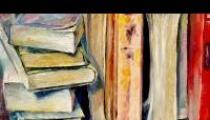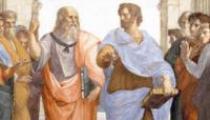"Stat crux, dum volvitur orbis"
One of the most precious fruits of the extraordinary cultural, monastic and spiritual renascence of the period from the late 11th century to the beginnings of the 13th century (circa 1050-1220) was the foundation of the Order of Chartreuse, the Carthusians, by St Bruno (circa 1032-1101). The notional date is usually given as 1084.
In its immediate impact on the life of the Church of the 12th century, the other major foundation, that of the Order of Citeaux, the Cistercians, in 1098 overshadowed the Carthusians. By the death of St Bernard of Clairvaux in 1153 there were already 345 foundations, whereas 100 years after St Bruno's death, there were still only 33 Carthusian foundations (circa 12200).
However, during the past nine centuries, the Carthusian Order of monks and nuns has continuously represented a unique integration of the hermit life and the monasticism of the cenobium - the monastic life in common. It is the hermit life of the desert combined with the safeguards of a fundamentally Benedictine cenobitic balance. [Houses of Carthusians are called Charterhouses (a medieval English modification of Chartreuse Houses).
Much of the life of a Carthusian choir monk is spent in the solitude of his "cell" - really a hermitage with a walled garden. He leaves his cell principally for the long night-office of Vigils, which the Carthusians take several hours to chant slowly, and for the sung conventual Mass and for Vespers. The rest of the Divine Office is usually celebrated "in cell". Carthusian Priests, (and all choir monks normally are called to the priesthood), have no external visible ministry whatsoever, under any circumstances.
Historically, the Carthusians have not shown the compromises and mitigations of their exclusively contemplative orientation that have been characteristic of other monastic orders. Thus, after the golden age of the Bernardine 12th century, the history of the Cistercian monks has been one of subtle or obvious corruption of their simplicity, partially corrected by a constant series of providential reforms, such as the De Rance reform of La Trappe in the late 17th century which gave rise to the Trappist Cistercians (OCSO).
The phrase "Numquam reformatam, numquam deformatam" often applied to the Carthusians is an oversimplification - nonetheless, they have serenely stayed true to their vocation of "being alone with God". They have always been relatively few in numbers - the vocation is a rare one. But the study of Western Catholic Spirituality over the last 8 to 9 centuries reveals the leavening effect of the Carthusians. This spiritual elite has had an effect out of all proportion to their numbers.
A few examples:
- The strange relationship between the Carthusians and the Imitation of Christ. The Augustinian Thomas a Kempis (1379-1471) was undoubtedly the final redactor of the Imitatio Christi (he signed the MS of 1441). But Gerard Groote, (1340-1384), the founder of the community to which Thomas belonged, the "Brethren of the Common Life", wrote the prototype as a spiritual diary mainly during his sojourn with the Carthusians (circa 1375-1378). After his death, the Carthusians circulated the work widely, as they later did the redaction of Thomas a Kempis.
- The transmission of the treasures of 14th century English mysticism. The writings of: (a) the anonymous priest author of the Cloud of Unknowing; (b) the Scale of Perfection of Walter Hilton; (c) The Revelations of Divine Love of Julian of Norwich; and the less important Furnace of Love etc. of Richard Rolle of Hampole were all copied and transmitted by Carthusian monks in England. Indeed a good case can be made that the Cloud's author was a Carthusian Monk.
- The interaction between St Ignatius of Loyola (1491-1556) and the Carthusians. The Carthusian Order exercised a lifelong influence on the founder of the great apostolic Order of the Society of Jesus. Ignatius was converted in 1521 while recovering from his Pamplona battle wounds. He read the Carthusian Ludolph of Saxony's (circa 13001378) Life of Christ. The Jesuits enjoyed intimate relations with the Carthusians - permitting their members to transfer to the Carthusian order and even return to the Society without loss of position (altogether extraordinary permissions).
Bibliography on the Carthusians
- Compact Disc: In the Silence of the Word, a Carthusian Meditation, by the monks of Parkminster, D.L.T., 1998
- Books about Carthusians: P. Van der Meer de Walcheren, The White Paradise, David McKay, N.Y., 1952. Andre Ravier S.J., Saint Bruno, the Carthusian. Pub. Ignatius Press, 1996. John Skinner, Hear Our Silence, Pub. Fount Collins, 1995.
- Carthusian books: A Carthuslan, The Spirit of Place, with photos of Parkininster, D.L.T., 1998. A Carthuslan, The Way of Silent Love, noviciate conferences (1), D.L.T., 1993 A Carthuslan. The Call of Silent Love. noviciate conferences (II), D.L.T., 1995. A Carthuslan. Interior Prayer. Carthuslan Novice Conferences (1111), D.L.T.' 1996. A Carthuslan. The Freedom of Obedience, Carthuslan Novice Conferences (IV), D.L.T., 1998. Carthuslan priors and novice masters, The Wound of Love, D.L.T., 1994. A Carthusian, Where Silence is Praise, D.L.T., new edition, 1997. A Carthuslan, The Prayer of Love and Silence, D.L.T., new edition, 1998. Dom Augustin Guillerand. They Speak by Silences, D.L.T.. new edition, 1996. Dom Augustin Guillerand, The Prayer of The Presence of God, Dimension Books, 1966. Guigo I, The Meditations, tr. A. G. Mursell, Kalamazoo, 1995. Guigo II. The Ladder of Monks and Twelve Meditations, tr. J. Walsh S.J., Mowbray, 1978. William, of St. Thierry, The Golden Epistle. tr. W. Shewring, Sheed and Ward, new edition 1980




